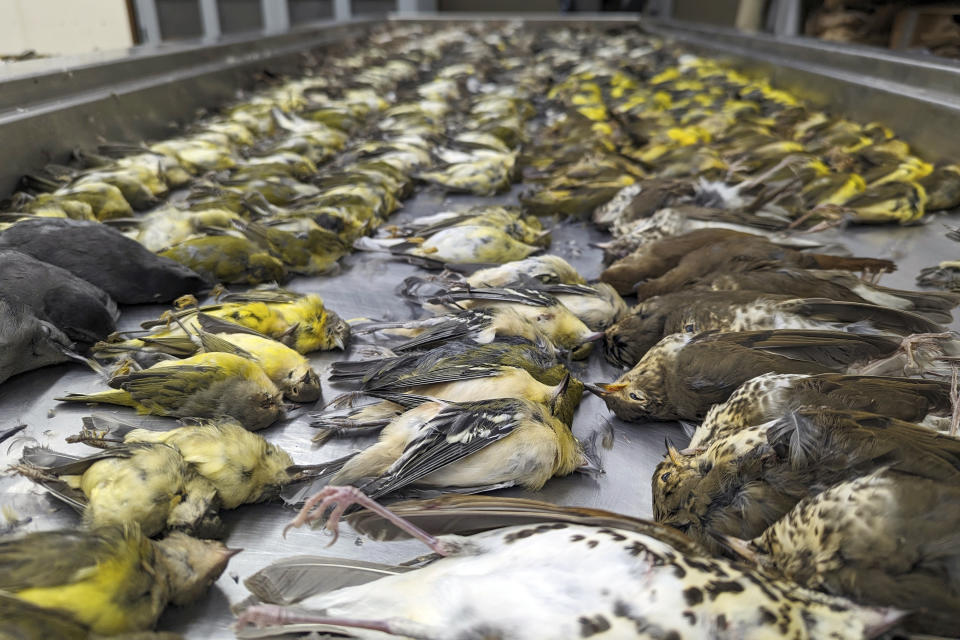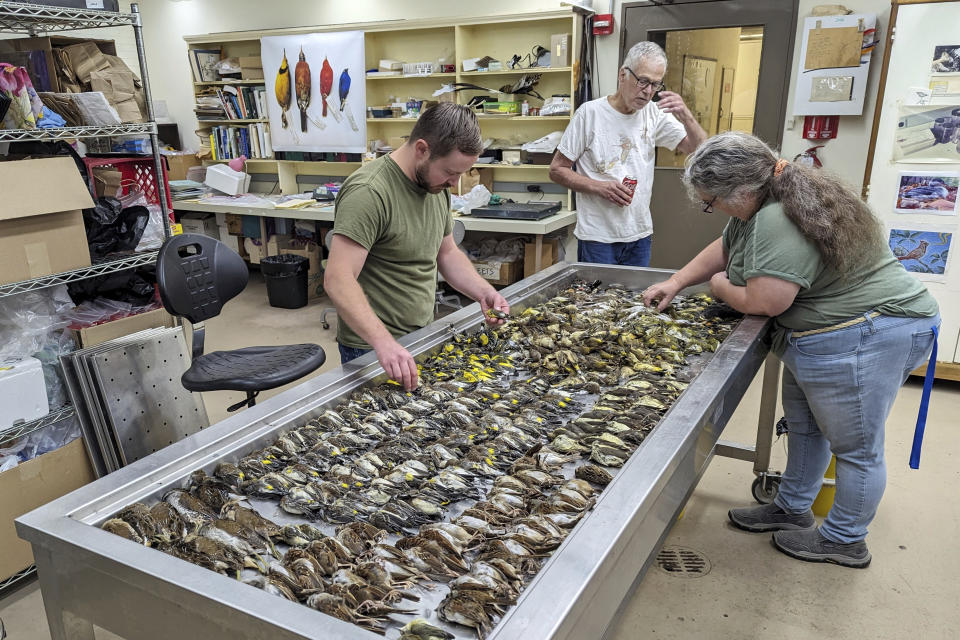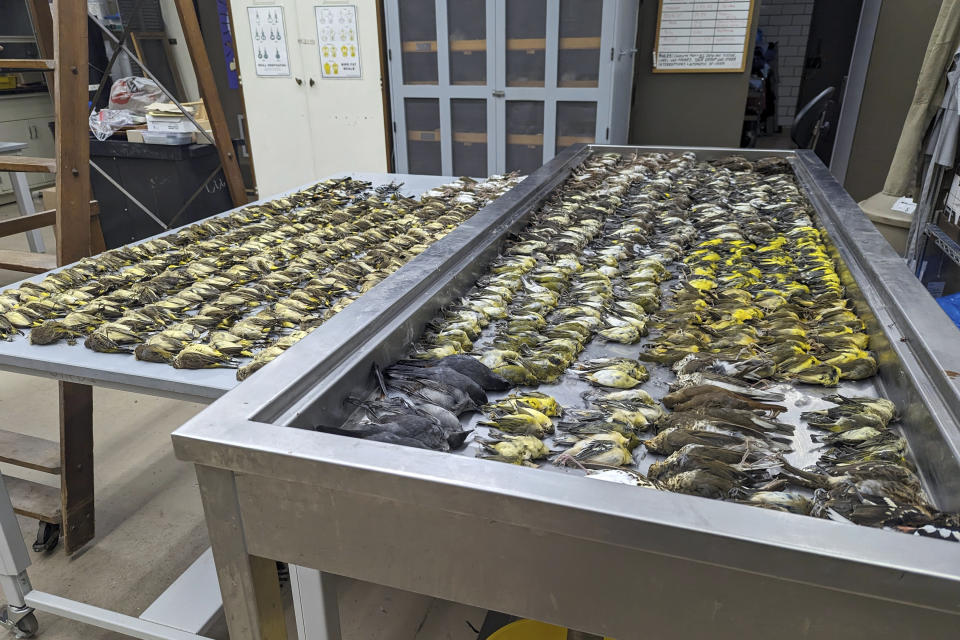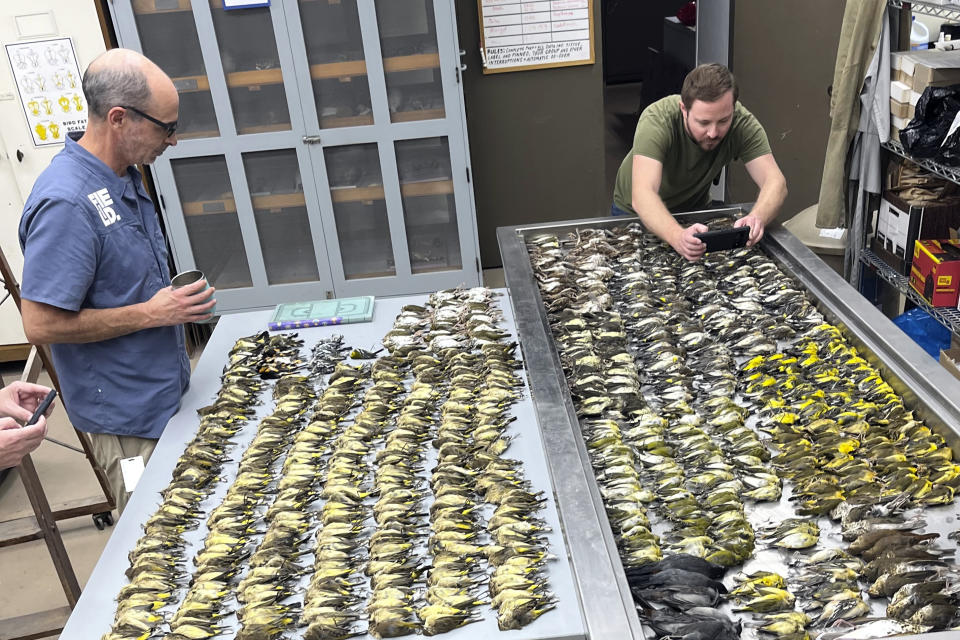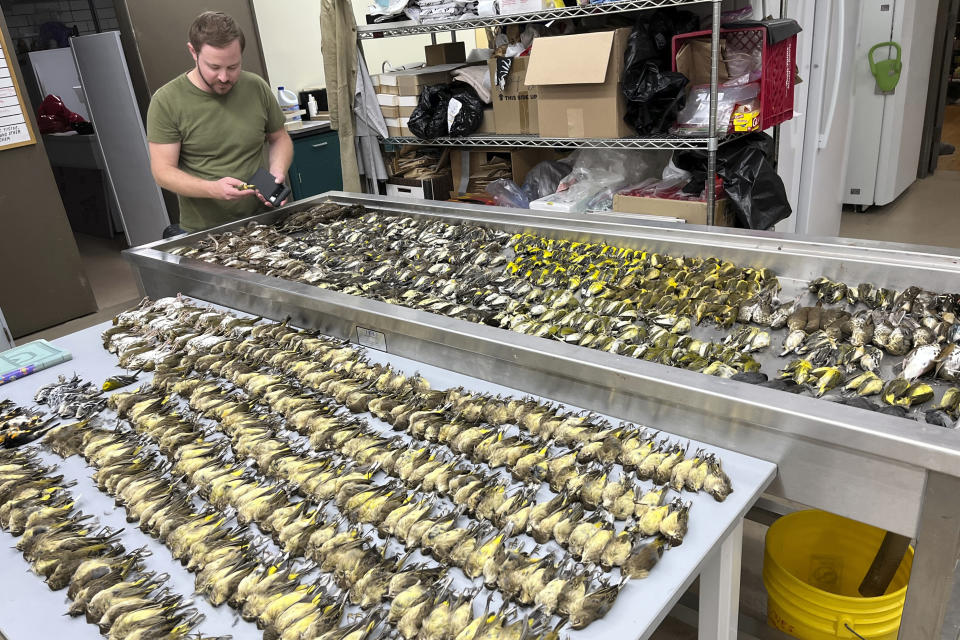Nearly 1,000 migrating songbirds perish after crashing into windows at Chicago exhibition hall
David Willard has been checking the grounds of Chicago's lakefront exhibition center for dead birds for 40 years. On Thursday morning he found something horrible: Hundreds of dead songbirds, so thick they looked like a carpet.
Nearly 1,000 songbirds perished during the night after crashing into the McCormick Place Lakeside Center 's windows, the result, according to avian experts, of a deadly confluence of prime migration conditions, rain and the low-slung exhibition hall's lights and window-lined walls.
“It was just like a carpet of dead birds at the windows there,” said Willard, a retired bird division collections manager at the Chicago Field Museum, where his duties included administering, preserving and cataloging the museum's collection of 500,000 bird specimens as well as searching for bird strikes as part of migration research.
“A normal night would be zero to 15 (dead) birds. It was just kind of a shocking outlier to what we've experienced," Willard said. "In 40 years of keeping track of what's happening at McCormick, we've never seen anything remotely on that scale."
Researchers estimate hundreds of millions of birds die in window strikes in the United States each year. Scientists with the Smithsonian Conservation Biology Institute and the U.S. Fish and Wildlife Service released a study in 2014 that put the number between 365 million and 988 million birds annually.
Window strikes are an issue in almost every major U.S. city. Birds don't see clear or reflective glass and don't understand it's a lethal barrier. When they see plants or bushes through windows or reflected in them, they head for them, killing themselves in the process.
Birds that migrate at night, like sparrows and warblers, rely on the stars to navigate. Bright lights from buildings both attract and confuse them, leading to window strikes or birds flying around the lights until they die from exhaustion — a phenomenon known as fatal light attraction. In 2017, for example, almost 400 passerines became disoriented in a Galveston, Texas, skyscraper's floodlights and died in collisions with windows.
“Unfortunately, it is really common,” said Matt Igleski, executive director of the Chicago Audubon Society. “We see this in pretty much every major city during spring and fall migration. This (the window strikes at McCormick Place) was a very catastrophic single event, but when you add it all up (across the country), it's always like that.”
Conditions were ripe for a massive wave of songbird southern migration over Chicago on Wednesday evening, said Stan Temple, a retired University of Wisconsin-Madison wildlife ecology professor and avian expert.
Small songbirds feed during the day and migrate at night to avoid air turbulence and predators. They’ve been waiting for northerly winds to give them a boost south, Temple said, but September saw unusually warm southern winds that kept birds in a holding pattern here. On Wednesday evening a front swept south, providing a tailwind, and thousands of birds took to the skies.
“You had all these birds that were just raring to go but they’ve been held up with this weird September and October with temperatures way above normal,” Temple said. “You had this huge pack of birds take off.”
The birds swept south over Chicago, following the Lake Michigan shoreline - and right into a maze of illuminated structures, Temple said.
Pre-dawn rain forced the birds to drop to lower altitudes, where they found McCormick Place’s lights on, Willard said. According to the field museum’s count, 964 birds died at the center. That’s about 700 more than have been found at the center at any point in the last 40 years, Willard said. Members of 33 species died, according to the field museum; most of them were palm and yellow-rumped warblers.
Window strikes and fatal light attraction are easily preventable, said Anna Pidgeon, an avian ecologist at the University of Wisconsin-Madison. Building managers can simply dim their lights, she said, and architects can design windows with markings in the glass that birds can easily recognize. People can add screens, paint their windows or apply decals to the glass as well.
New York City has taken to shutting off the twin beams of light symbolizing the World Trade Center for periods of time during its annual Sept. 11 memorial ceremony to prevent birds from becoming trapped in the light shafts. The National Audubon Society launched a program in 1999 called Lights Out, an effort to encourage urban centers to turn off or dim lights during migration months. Nearly 50 U.S. and Canadian cities have joined the movement, including Toronto, New York, Boston, San Diego, Dallas and Miami.
Chicago also participates in the Lights Out program. The city council in 2020 passed an ordinance requiring bird safety measures in new buildings but has yet to implement the requirements. The first buildings at McCormick Place were constructed in 1959.
Cynthia McCafferty, a spokesperson for McCormick Place, said the exhibition hall participates in Lights Out and interior lighting is turned off unless staff, clients or visitors need it. She added that the center maintains a six-acre (2.4-hectare) bird sanctuary.
McCafferty said an event has been going on all week at the center so the lights have been on when the building was occupied but turned off when it wasn't. She said she wasn't sure what time the window strikes occurred or whether the center was occupied then.
“It's an odd building,” Willard said of the exhibition center. “When it was built, people weren't thinking about bird safety. They still aren't in most architecture. It's right on the lakefront. There are many nights when it's lit up. People are describing the whole night of migration as part of a once in a lifetime thing ... (but) this still is an unacceptable intrusion by humans and their architecture. Just terribly sad and dramatic.”
—-
This story has been updated to correct the name of the exhibition center to McCormick Place, not McCormick Center.
